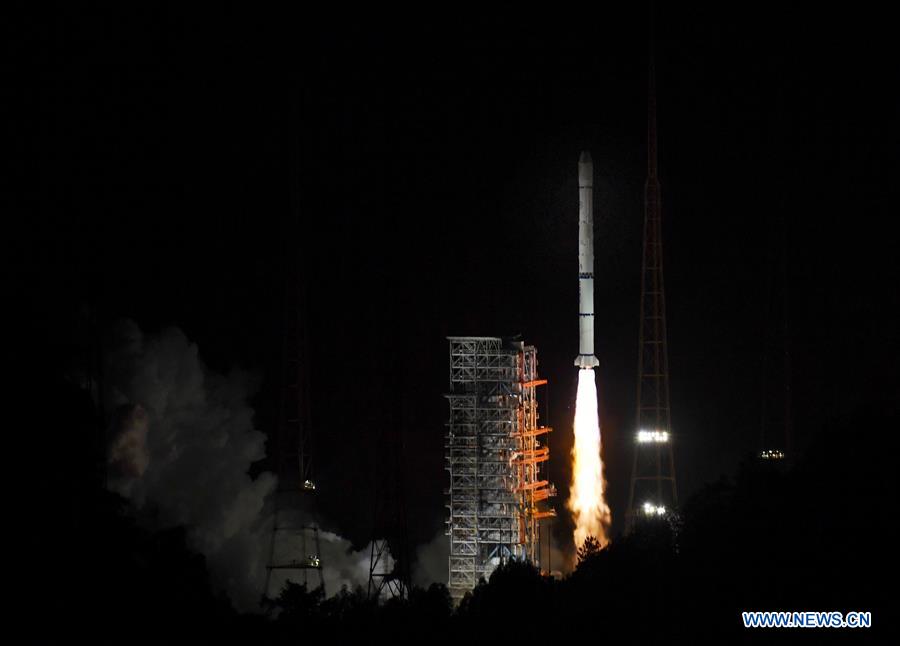
The Fengyun-2H meteorological satellite, carried by a Long March-3A rocket, is launched from the Xichang Satellite Launch Center in southwest China's Sichuan Province, June 5, 2018. (Xinhua/Liu Kun)
XICHANG, June 5 (Xinhua) -- China on Tuesday launched the new Fengyun-2H meteorological satellite to improve the accuracy of weather forecasting and provide better meteorological services to countries participating in the Belt and Road Initiative.
The Fengyun-2H was launched on a Long March-3A rocket at 9:07 p.m., Beijing Time, from the Xichang Satellite Launch Center in southwest China's Sichuan Province.
It was the 277th mission of the Long March rocket series.
A geostationary orbit satellite, the Fengyun-2H is the last in the Fengyun-2 series. The Fengyun-4 series will dominate China's new generation geostationary orbit meteorological satellites, said Zhao Jian, deputy director of the Department of System Engineering of China National Space Administration (CNSA).
In response to a request from the World Meteorological Organization (WMO) and the Asia-Pacific Space Cooperation Organization (APSCO), the position of Fengyun-2H will be changed from original 86.5 degrees east longitude to 79 degrees east longitude.
This means the Fengyun series satellites will be able to cover all the territory of China, as well as countries along the Belt and Road, the Indian Ocean and most African countries, according to the CNSA.
The adjustment will enable the Fengyun series satellites to acquire meteorological data over a wider range, improve weather forecasting accuracy and the ability to cope with climate change and mitigate losses caused by natural disasters, Zhao said.
Equipped with a scanning radiometer and space environment monitor, Fengyun-2H will provide real time cloud and water vapor images and space weather information to clients in the Asia-Pacific region, said Wei Caiying, chief commander of the ground application system of Fengyun-2H and deputy director of the National Satellite Meteorological Center.















